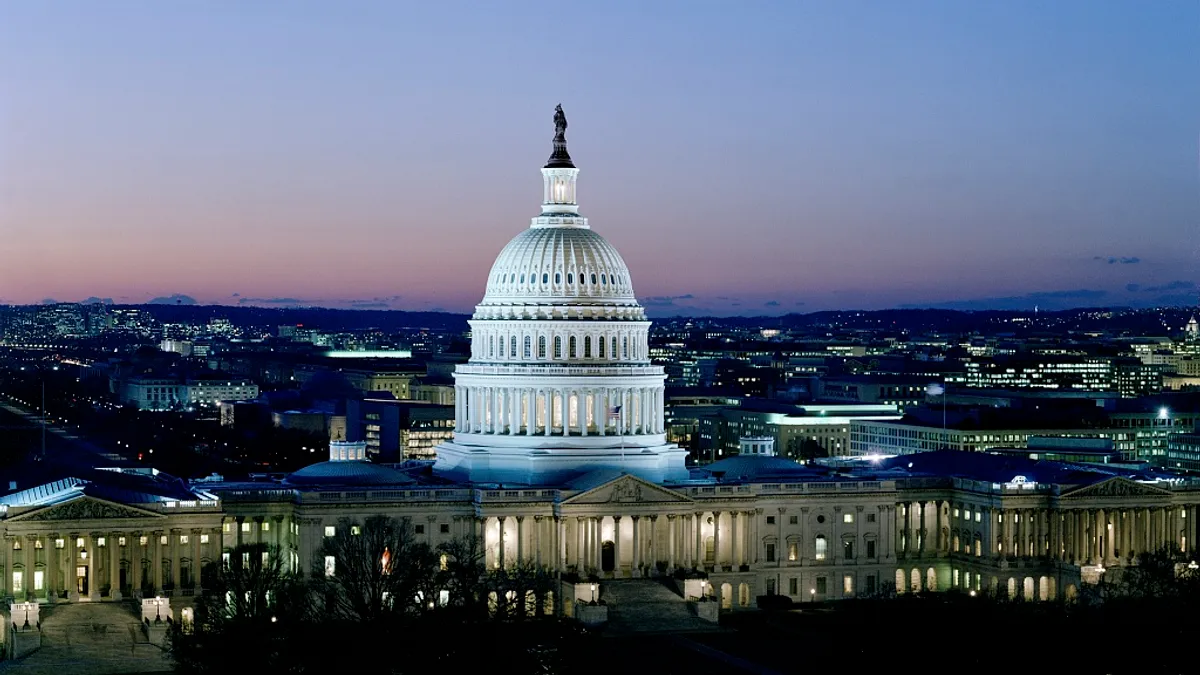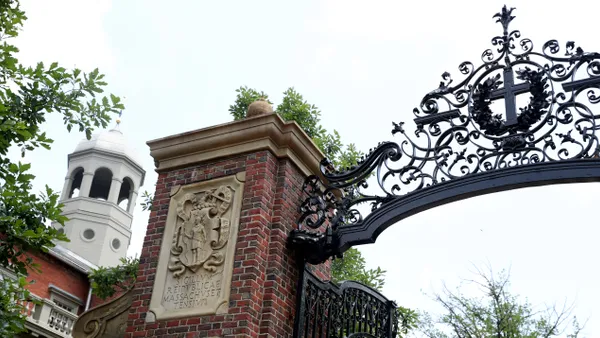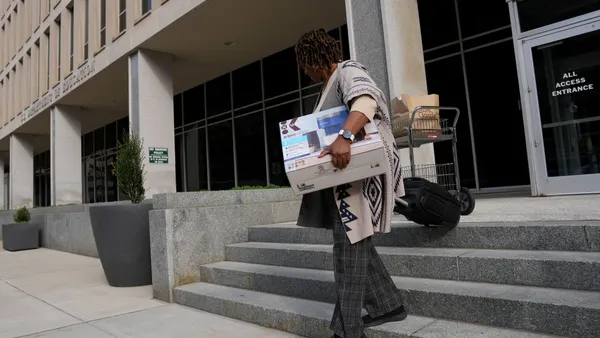Dive Brief:
- Following a brief government shutdown, Congress approved a 652-page two-year bipartisan budget proposal Friday that raises spending caps by over $300 billion for military and domestic affairs, while allotting $90 billion for disaster relief, and funding the government for the next six weeks as a revised appropriations plan is hashed out. The attached continuing resolution summary outlines the proposed direction of the funding for the next budget, along with a budget agreement deal circulating among congressional leaders, as uploaded by Think Progress.
- The bill itself outlines appropriations for disaster relief aid toward institutions that were affected by wildfires and hurricanes, increases scientific research funding for groups like the National Science Foundation, exempts Berea College in Kentucky from having to pay a tax on its endowments as it provides free tuition, and provides state funding for abstinence education. The continuing resolution until March 23 — which is tacitly agreed upon but not concrete — includes "$4 billion [over two years] for programs that aid college affordability, including those that help police officers, teachers, and firefighters."
- The agreement doesn't specify what the $4 billion will go toward beyond "affordability," and includes no provisions around those students under Deferred Action for Childhood Arrivals. Though, House Minority leader Nancy Pelosi (D-CA) spoke for nearly eight hours opposing lack of action in the budget for Dreamers and called on Speaker Paul Ryan to address the issue in an immigration reform bill.
Dive Insight:
The current version of the budget does not specify funding for education beyond disaster relief aid, though overviews on what ought to be prioritized are circulating throughout congress to inform the next iteration of the budget proposal on the side of appropriators.
"Senate budgets are non-binding, so what's being reported on is a staff agreement summary that signals between the leaders what to prioritize. So with that, the appropriators need to then fill in the pieces to actually get those things done," explained Emily Bouck, Policy & Advocacy Director at Higher Learning Advocates.
Bouck told Education Dive that the $4 billion going to "college affordability" as noted in the budget agreement overview for college completion programs is now being discussed, and appropriators will be using those conversations to come to a more long-term agreement. The budget sets out the top-line and the continuing resolution outlining these details will expire on March 23.
"The budget summary says $2 billion over fiscal year 2018 and $2 billion over fiscal year 2019. But you have to remember it's not guaranteed. College completion and affordability is a pretty broad umbrella for higher ed programs," said Bouck.
"While the budget deal passed by Congress takes critical steps toward a long-term funding agreement, it is only the beginning of several important debates that will impact today’s students and higher education providers. Summaries from Senate leadership have called for $4 billion of expansion of federal funding for student-centered programs. Expanding access and affordability is vital, but it’s also key that Congress direct these resources at programs that improve student outcomes and completion."
While the budget makes no mention of how to handle Dreamers, Pelosi made it clear throughout discussions Wednesday and Thursday that she is focusing on the issue going forward. As to what appropriators may be targeting in priorities for the $4 billion toward education, President Donald Trump made it very clear in his State of the Union address that he wanted the administration to focus on vocational programs — which may point toward more grants for initiatives focused on student outcomes and pipelines into the workforce.
Bouck further points out that the legislation may impact accountability measures for evaluating institutions' focus on student success.
“Unfortunately, the legislation also includes a provision that could roll back existing accountability. It’s troubling that the deal passed this morning allows the Secretary of Education to waive the cohort default rate (CDR) in economically distressed communities. This would weaken a vital accountability rule designed to hold institutions accountable for the outcomes their students experience. While student loan default may be an imperfect measure of measuring student success, it is at least a bare minimum standard and proxy for whether an institution of higher education is delivering any acceptable level of quality and value to students," said Bouck.
"We need to ensure students in economically distressed communities use their federal aid at institutions with the strongest outcomes—not roll back accountability for precisely those schools most likely to fail their students and produce poor outcomes."














